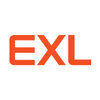Accounts Payable Executive
100+ Accounts Payable Executive Interview Questions and Answers

Asked in Genpact

Q. What is a Bank Reconciliation Statement?
Bank reconciliation statement is a document that compares the bank statement with the company's records to identify any discrepancies.
It is used to ensure that the company's records match the bank's records
It helps in identifying errors, omissions, or fraudulent activities
It includes comparing deposits, withdrawals, and bank charges
Reconciling items may include outstanding checks, deposits in transit, and bank errors
The statement is prepared regularly to maintain accurate fin...read more

Asked in Bosch

Q. What's is accounts payable what's invoice what's is po and non po
Accounts Payable is the process of managing and paying invoices. Invoices are bills for goods or services received.
Accounts Payable is a department responsible for managing and processing invoices
Invoices are bills received from vendors for goods or services purchased
PO (Purchase Order) is a document issued by a buyer to a seller, indicating the type, quantity, and agreed price for products or services
Non-PO invoices are bills received without a purchase order, often for serv...read more

Asked in Genpact

Q. What is a credit note?
A credit note is a document issued by a seller to a buyer, indicating that a certain amount has been credited to the buyer's account.
It is a document issued by a seller to a buyer
It indicates that a certain amount has been credited to the buyer's account
It is usually issued when there is an overpayment or a return of goods
It serves as a proof of the transaction and helps in reconciling accounts

Asked in EXL Service

Q. How many types of payment modes are there?
There are several modes of payment including cash, check, credit/debit card, wire transfer, and online payment.
Cash
Check
Credit/debit card
Wire transfer
Online payment

Asked in John Deere

Q. What is TDS ? Gave a TDS entry
TDS stands for Tax Deducted at Source. It is a tax collected by the government at the time of payment.
TDS is a tax collected by the government at the time of payment.
It is deducted from the payment made to the recipient.
The person making the payment is responsible for deducting TDS and depositing it with the government.
TDS is applicable on various types of payments such as salary, rent, commission, etc.
The TDS entry in the books of accounts will show the amount deducted and d...read more

Asked in Genpact

Q. How do you handle discrepancies between purchase orders, invoices, and receipts?
I carefully review all documents to identify and resolve discrepancies.
Compare the purchase order details with the invoice and receipts to identify any discrepancies
Communicate with vendors or suppliers to clarify any discrepancies and request corrected invoices if necessary
Work closely with the procurement team to ensure accurate documentation and resolve any issues promptly
Accounts Payable Executive Jobs




Asked in Genpact

Q. What is P2P P2P Cycle pivot table excel SAP T Codes PO based & Non PO based invoice Processing
P2P stands for Procure to Pay, which is the process of obtaining and paying for goods and services.
P2P Cycle involves the steps from requisitioning goods/services to making payment for them.
A pivot table is a data summarization tool in Excel that allows for quick analysis and comparison of data.
SAP T Codes are transaction codes used in SAP software to access specific functions or perform specific tasks.
PO based invoice processing involves matching invoices to purchase orders,...read more

Asked in TCS

Q. What is Credit Note and Debit Note ?
Credit Note is issued by a seller to a buyer for reducing the amount payable, while Debit Note is issued by a buyer to a seller for increasing the amount payable.
Credit Note reduces the amount payable by the buyer to the seller.
Debit Note increases the amount payable by the buyer to the seller.
Credit Note is issued when there is an overcharge or return of goods.
Debit Note is issued when there is an undercharge or additional goods received.
Both Credit Note and Debit Note are u...read more
Share interview questions and help millions of jobseekers 🌟


Asked in Universal Weather and Aviation

Q. As a fresher, your communication skills will be assessed through an introduction.
I am a dedicated Accounts Payable Executive with strong communication skills and a keen eye for detail, eager to contribute to your team.
I graduated with a degree in Accounting, where I developed a solid foundation in financial principles.
During my internship at XYZ Company, I managed vendor invoices and improved processing time by 20%.
I am proficient in accounting software like QuickBooks and SAP, which enhances my ability to communicate effectively with vendors.
I believe in...read more

Asked in Cipla Health

Q. What is the transaction code to display vendor information?
The transaction code for vendor display is XK03.
Transaction code XK03 is used to display vendor master data.
It can be used to view vendor details such as address, payment terms, and bank information.
XK03 can also be used to make changes to vendor master data.
Other related transaction codes include XK04 for vendor changes and XK05 for vendor block/unblock.

Asked in Capgemini

Q. What is the difference between PO invoices and non-PO invoices?
PO invoices are based on purchase orders, while non-PO invoices are not associated with a purchase order.
PO invoices are generated when a purchase order is created and approved before the goods or services are received.
Non-PO invoices are not tied to a purchase order and are typically used for one-time purchases or services.
PO invoices require matching with the corresponding purchase order and goods receipt, while non-PO invoices do not have this requirement.
PO invoices help ...read more

Asked in John Deere

Q. Connection between trading, P/L and Balance Sheet.
Trading affects P/L which in turn affects the Balance Sheet.
Trading activities impact the revenue and expenses recorded in the P/L statement.
The P/L statement shows the net income or loss for a period.
The net income or loss is then reflected in the equity section of the Balance Sheet.
Changes in assets and liabilities also impact the Balance Sheet.
For example, if a company sells inventory, it will increase revenue in the P/L statement and decrease inventory in the Balance Shee...read more

Asked in Tata Motors

Q. What is Procure to Pay (P2P)?
Procure to pay (P2P) is a process that involves the acquisition of goods or services, from the procurement stage to the payment stage.
P2P is a comprehensive process that includes requisitioning, purchasing, receiving, and paying for goods or services.
It starts with the identification of a need, followed by supplier selection, purchase order creation, goods receipt, invoice processing, and ends with payment to the supplier.
P2P aims to streamline and automate the entire procure...read more

Asked in EXL Service

Q. What is the P2P cycle in Accounts Payable?
P2P cycle or AP refers to the end-to-end process of purchasing goods or services, receiving and verifying invoices, and making payments to vendors.
P2P stands for Procure-to-Pay, which encompasses all activities from requisitioning to payment.
Accounts Payable (AP) is the department responsible for managing and processing vendor invoices.
The P2P cycle starts with the identification of a need for goods or services and ends with the payment to the vendor.
Key steps in the P2P cycl...read more

Asked in Genpact

Q. Where can the vendor reconciliation account be assigned?
Vendor reconciliation accounts are assigned in the accounting system to ensure accurate tracking of vendor transactions.
Assign in the ERP system under vendor master data settings.
Example: In SAP, use transaction code XK02 to edit vendor details.
Link to specific general ledger accounts for accurate reporting.
Example: Assign a reconciliation account for each vendor type, like 'Suppliers' or 'Contractors'.
Ensure proper mapping to facilitate monthly reconciliation processes.

Asked in Invensis Technologies

Q. what is accounts payable and receivables ?
Accounts payable is the amount a company owes to its suppliers for goods and services purchased on credit.
Accounts payable is a liability on the balance sheet
It represents the amount a company owes to its suppliers for goods or services received
Accounts receivable is the opposite, representing the money owed to a company by its customers
Accounts payable is typically paid within a certain period, often 30, 60, or 90 days
Examples of accounts payable include invoices from vendor...read more

Asked in Samvardhana Motherson Group

Q. What is 2 way and 3 way matching? What is the t.code of GRN? What is P2P cycle?
2 way matching compares invoice and purchase order, 3 way matching adds receipt of goods to the comparison. GRN t.code is MIGO. P2P cycle is Procure to Pay cycle.
2 way matching compares invoice and purchase order
3 way matching adds receipt of goods to the comparison
GRN t.code is MIGO
P2P cycle is Procure to Pay cycle

Asked in Genpact

Q. What are the three golden rules of accounting?
The three golden rules of accounting are the rules of debit and credit, which are: 1. Debit the receiver, credit the giver 2. Debit what comes in, credit what goes out 3. Debit expenses and losses, credit income and gains.
Debit the receiver, credit the giver
Debit what comes in, credit what goes out
Debit expenses and losses, credit income and gains

Asked in Livpure

Q. What is the process of Accounts Payable (AP)?
The process of Accounts Payable involves receiving, verifying, and processing invoices for payment.
Receiving invoices from vendors
Verifying the accuracy of invoices against purchase orders and receipts
Obtaining approval for payment
Processing payments through the company's accounting system
Reconciling accounts payable sub-ledger with general ledger

Asked in IBM

Q. What can you tell me about accounts payable?
Accounts payable is the amount of money a company owes to its suppliers or vendors for goods or services purchased on credit.
Accounts payable is a liability on the company's balance sheet
It represents the amount owed by the company to its creditors
Accounts payable is typically settled within a certain period, often 30, 60, or 90 days
Examples of accounts payable include invoices from suppliers, utility bills, and rent payments

Asked in Sebros Industries

Q. What is a GRN (Goods Receipt Note)?
GRN or Goods Receipt Note is a document that records the receipt of goods from a supplier.
GRN is a document that verifies the receipt of goods from a supplier.
It contains details such as the quantity and quality of goods received.
It is used to match the goods received with the purchase order and invoice.
GRN is an important document for accounts payable as it helps in verifying and processing supplier invoices.
Example: A company receives a shipment of 100 units of a product fr...read more

Asked in TCS

Q. What is a trial balance?
Trial balance is a list of all the general ledger accounts and their balances at a specific point in time.
Prepared at the end of an accounting period
Used to ensure that debits and credits are equal
Helps in identifying errors and omissions in the accounting records
If the debits and credits do not match, it indicates an error in the accounting records
Example: If the total debit balance is $50,000, the total credit balance should also be $50,000

Asked in Zetwerk

Q. What is the purchase entry for TDS?
The purchase entry for TDS includes debiting the expense account and crediting the TDS payable account.
Debit the expense account for the amount of the purchase
Credit the TDS payable account for the TDS amount deducted
Example: Debit Purchases account for Rs. 10,000 and Credit TDS Payable account for Rs. 1,000

Asked in Axis Clinicals

Q. What is the process for reconciling the vendor department?
Reconciling the vendor department involves verifying and matching vendor invoices with purchase orders and payment records.
Invoice Verification: Ensure that the vendor invoice matches the purchase order in terms of quantity, price, and terms.
Payment Matching: Cross-check payments made against the invoices to confirm that all amounts are accurately recorded.
Discrepancy Resolution: Identify and resolve any discrepancies between vendor invoices and internal records, such as inco...read more

Asked in GMR Group

Q. What were your roles and responsibilities in your previous company?
In my previous role, I managed vendor relationships, processed invoices, and ensured timely payments to maintain financial accuracy.
Managed vendor relationships by negotiating payment terms and resolving discrepancies.
Processed invoices accurately and efficiently, ensuring compliance with company policies.
Conducted regular audits of accounts payable to identify and rectify errors.
Collaborated with the finance team to prepare monthly reports on outstanding payables.
Implemented...read more

Asked in Genpact

Q. Are you comfortable with working the night shift?
Yes, I am comfortable working the night shift and can adapt my schedule to meet the needs of the team.
I have previously worked night shifts in my last role, which helped me develop strong time management skills.
I understand that working nights can sometimes lead to challenges, but I am committed to maintaining productivity.
I have strategies in place to ensure I stay alert and focused during night hours, such as regular breaks and healthy snacks.

Asked in HCLTech

Q. What is the objective of vendor invoicing?
The objective of vendor invoicing is to accurately record and track the goods or services purchased from a vendor and facilitate timely payment.
Vendor invoicing helps in maintaining accurate records of purchases and expenses.
It ensures that the company is billed correctly for the goods or services received.
Vendor invoicing helps in tracking payments and managing cash flow effectively.
It also helps in building and maintaining good relationships with vendors.
Examples: Receiving...read more

Asked in TCS

Q. What is the three-way matching rule?
3 way matching rule is a process in accounts payable where the purchase order, receiving report, and vendor invoice are compared to ensure accuracy.
Involves matching the purchase order with the receiving report and vendor invoice
Ensures that the quantities, prices, and terms on all three documents match
Helps prevent errors, fraud, and discrepancies in payments
Example: If a company orders 100 units of a product, receives 90 units, and is invoiced for 100 units, the 3 way match...read more

Asked in Genpact

Q. What is 3-way matching?
3 way matching is a process in accounts payable that involves comparing three documents - purchase order, receiving report, and invoice - to ensure accuracy and prevent fraud.
3 way matching involves comparing the purchase order, receiving report, and invoice.
The purpose of 3 way matching is to ensure accuracy and prevent fraud in accounts payable.
The purchase order specifies the items ordered and their quantities.
The receiving report confirms the receipt of the items and thei...read more

Asked in Cipla Health

Q. What are the due dates for TDS and GST?
TDS and GST have different due dates depending on the type of taxpayer and the frequency of filing.
TDS due dates vary based on the type of payment and the category of taxpayer.
For example, TDS on salary payments is due on the 7th of the following month, while TDS on rent payments is due on the 30th of the following month.
GST due dates depend on the turnover of the taxpayer and the frequency of filing.
For example, taxpayers with a turnover of less than 1.5 crores can file GST ...read more
Interview Questions of Similar Designations
Interview Experiences of Popular Companies









Reviews
Interviews
Salaries
Users


















